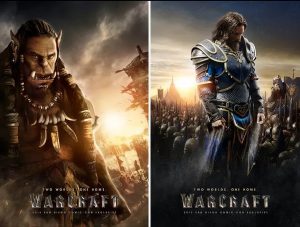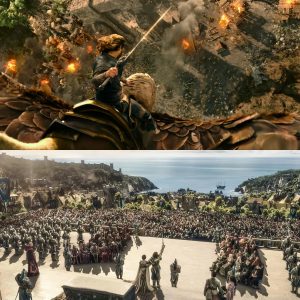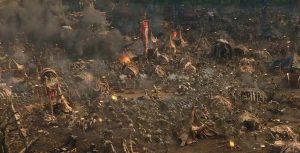Warcraft (2016), directed by Duncan Jones, brings the iconic video game franchise to life, exploring the epic battle between humans and orcs in the fantasy world of Azeroth. The film delves into themes of war, loyalty, and the blurred lines between good and evil.

The story follows the arrival of the orcs, led by Durotan (Toby Kebbell), who flee their dying world and invade Azeroth. At the same time, the human kingdom of Stormwind, led by King Llane Wrynn (Dominic Cooper) and its champion Anduin Lothar (Travis Fimmel), faces an unprecedented threat. What begins as a battle for survival evolves into a more complex narrative of two civilizations fighting for their lives, where both sides are trying to protect their homes and families.

The film stands out with its stunning visual effects, bringing the fantastical elements of Warcraft to the screen. The orcs, created through motion capture and CGI, feel alive and emotionally resonant, a highlight of the movie. While the special effects are impressive, Warcraft struggles to balance its large ensemble cast and the complexities of its world-building. For viewers unfamiliar with the game, the lore can be overwhelming, though the central human-orc conflict is relatable.

At its core, Warcraft explores the price of war and the potential for unity between different peoples when faced with a common enemy. It questions the idea of heroism and villainy, as both sides are shown to have noble causes, making the audience question who the “true enemy” really is.
Though the film had mixed reviews, Warcraft delivers a thrilling visual spectacle and an exploration of themes that resonate in today’s world: the impact of war, the cost of survival, and the possibility of finding common ground amid conflict.
